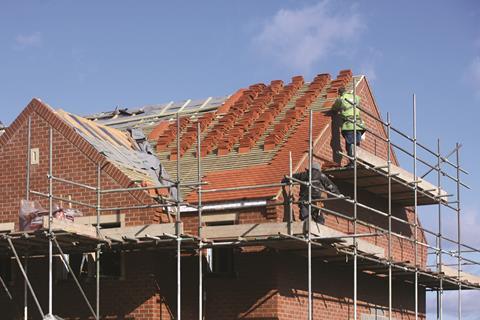SME housebuilder warns of consequences if no transition arrangements put in place

Government plans to drop the Help to Buy scheme for homebuyers in 2023 without any transitional element would be “political suicide”, according to an SME housebuilder, as new figures reveal the extent to which the initiative has bolstered the fortunes of the UK’s top firms and their shareholders.
The scheme – which sees homebuyers receive an equity loan from the government equivalent to 20% of the property they are purchasing, leaving them with only 5% deposit to find – was due to end three years ago but has been extended twice, most recently last year when it was also limited to first-time buyers from 2021. It is now due to end in 2023.
Karl Hick, chief executive of East Midlands-based housebuilder Larkfleet, which builds around 400 homes a year, said housing supply would be “devastated” if the government shelved the scheme entirely.
“I can’t see the government being prepared to switch it off – the repercussions would be dramatic,” he said, adding that it would be “political suicide” to scrap the scheme without any transitional arrangements.
The scheme’s demise may prove to be a headache for the government too, given its commitment to increase housing output to 300,000 a year by the end of the current parliament.
As it is, the winding-down of Help to Buy is going to be the housing sector’s “biggest challenge during the next few years,” said Elaine Bailey, chief executive of housing association the Hyde Group. “Builders are all scratching their heads about how to get off Help to Buy.”
The issue of the reliance on Help to Buy is backed up by figures from stockbroking firm AJ Bell, seen by Housing Today’s sister publication ��ɫ����TV, which show that of seven of the UK’s 10 biggest housebuilders Countryside was the most reliant on the scheme, which supported more than half (54%) of its completions last year. In absolute terms Persimmon has made greatest use of the scheme, with nearly half (48%) of the York-based housebuilder’s 16,449 new homes completed in 2018 being sold to purchasers taking advantage of Help to Buy.
For Persimmon’s two biggest rivals, Barratt Developments and Taylor Wimpey, the figures were 38% and 36% respectively. The proportion was higher than 30% for six of the seven companies, with the exception being Berkeley Group, whose new-build homes often sit above the £600,000 eligibility threshold.
Help to Buy has also boosted net housing additions, with the figure nearly doubling from 120,000 in 2012 to 220,000 last year. AJ Bell’s research suggests the top 10 volume housebuilders’ contribution to this total rose from 49,000 to 80,000 over the same period, 13% up on the previous peak in the late 2000s.
Dividends paid out by the top 10 housebuilders to shareholders have also mushroomed, rising from a total of £57m in 2012 to £2.2bn last year, AJ Bell’s study found, while average margins of 22% in 2018 among the same companies were well above those achieved the last housing boom, when they came in at 18%.



























No comments yet